
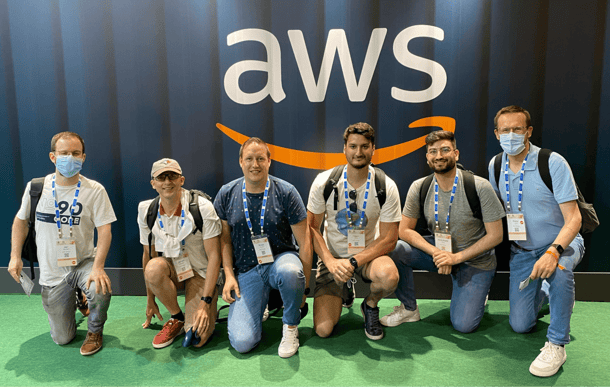
Didn’t make it to KubeCon this year? Read along to find out our highlights of the KubeCon / CloudNativeCon conference this year by ACA Group’s Cloud Native team!
What is KubeCon / CloudNativeCon?
KubeCon (Kubernetes Conference) / CloudNativeCon, organized yearly at EMAE by the Cloud Native Computing Foundation (CNCF), is a flagship conference that gathers adopters and technologists from leading open source and cloud native communities in a location. This year, approximately 5,000 physical and 10,000 virtual attendees showed up for the conference.
CNCF is the open source, vendor-neutral hub of cloud native computing, hosting projects like Kubernetes and Prometheus to make cloud native universal and sustainable.
Bringing 300+ sessions from partners, industry leaders, users and vendors on topics covering CI/CD, GitOps, Kubernetes, machine learning, observability, networking, performance, service mesh and security. It's clear there's always something interesting to hear about at KubeCon, no matter your area of interest or level of expertise!

It's clear that the Cloud Native ecosystem has grown to a mature, trend-setting and revolutionizing game-changer in the industry. All is initiated on the Kubernetes trend and a massive amount of organizations that support, use and have grown their business by building cloud native products or using them in mission-critical solutions.
2022's major themes
What struck us during this year’s KubeCon were the following major themes:
- The first was increasing maturity and stabilization of Kubernetes and associated products for monitoring, CI/CD, GitOps, operators, costing and service meshes, plus bug fixing and small improvements.
- The second is a more elaborate focus on security. Making pods more secure, preventing pod trampoline breakouts, end-to-end encryption and making full analysis of threats for a complete k8s company infrastructure.
- The third is sustainability and a growing conscience that systems running k8s and the apps on it consume a lot of energy while 60 to 80% of CPU remains unused.
- Even languages can be energy (in)efficient. Java is among the most power efficient, while Python apparently is far less due to the nature of the interpreter / compiler. Companies all need to plan and work on decreasing energy footprint in both applications and infrastructure. Autoscaling will play an important role in achieving this.
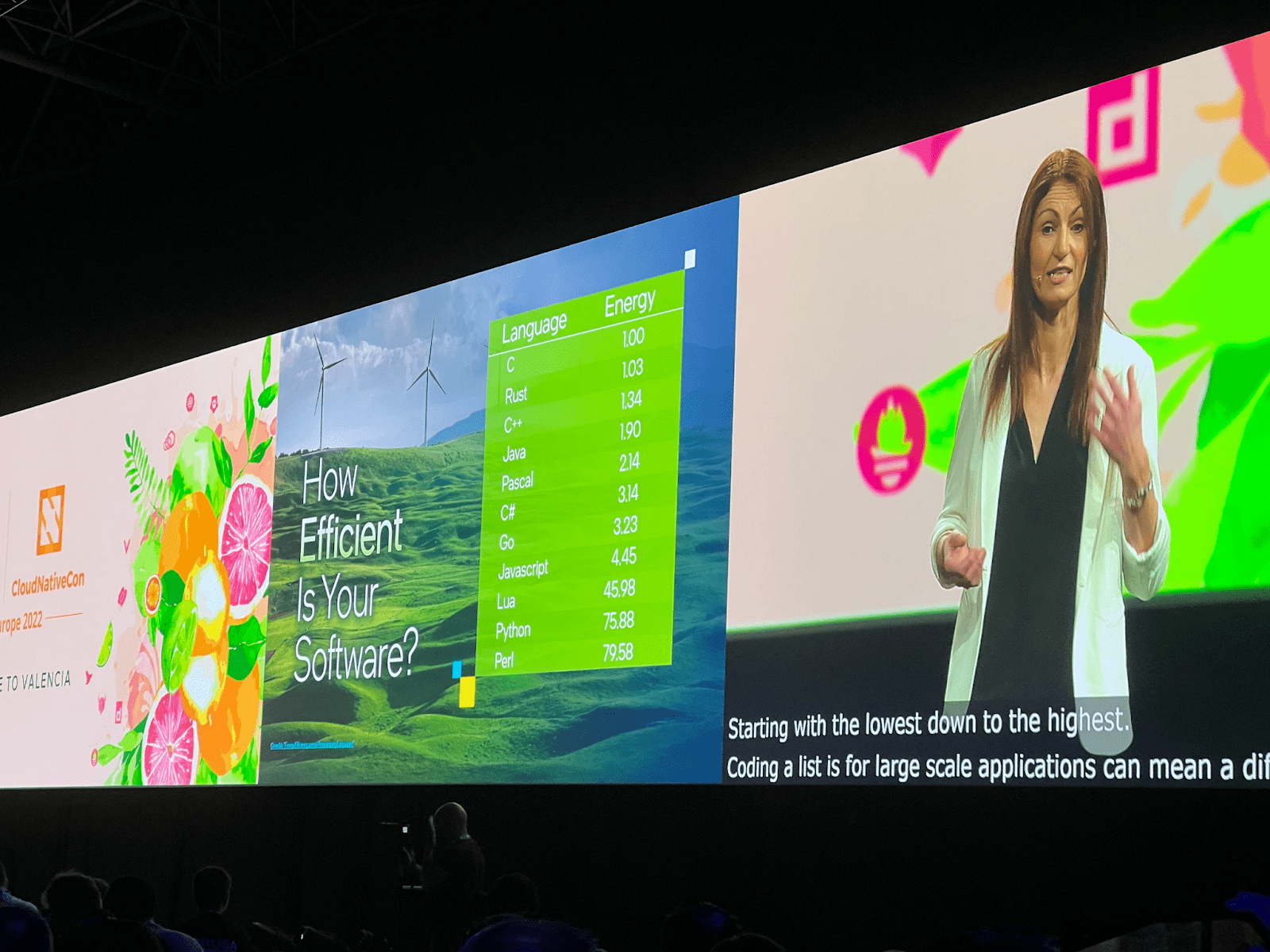
Sessions highlights
Sustainability
Data centers worldwide consume 8% of all generated electricity worldwide. So we'll need to reflect on
- the effective usage of our infrastructure and avoid idle time (on average CPU utilization is only between 20 and 40%)
- when servers are running, make them work with running as many workloads as possible
- shut down resources when they are not needed by applying autoscaling approaches
- the coding technology used in your software, some programming languages use less CPU.
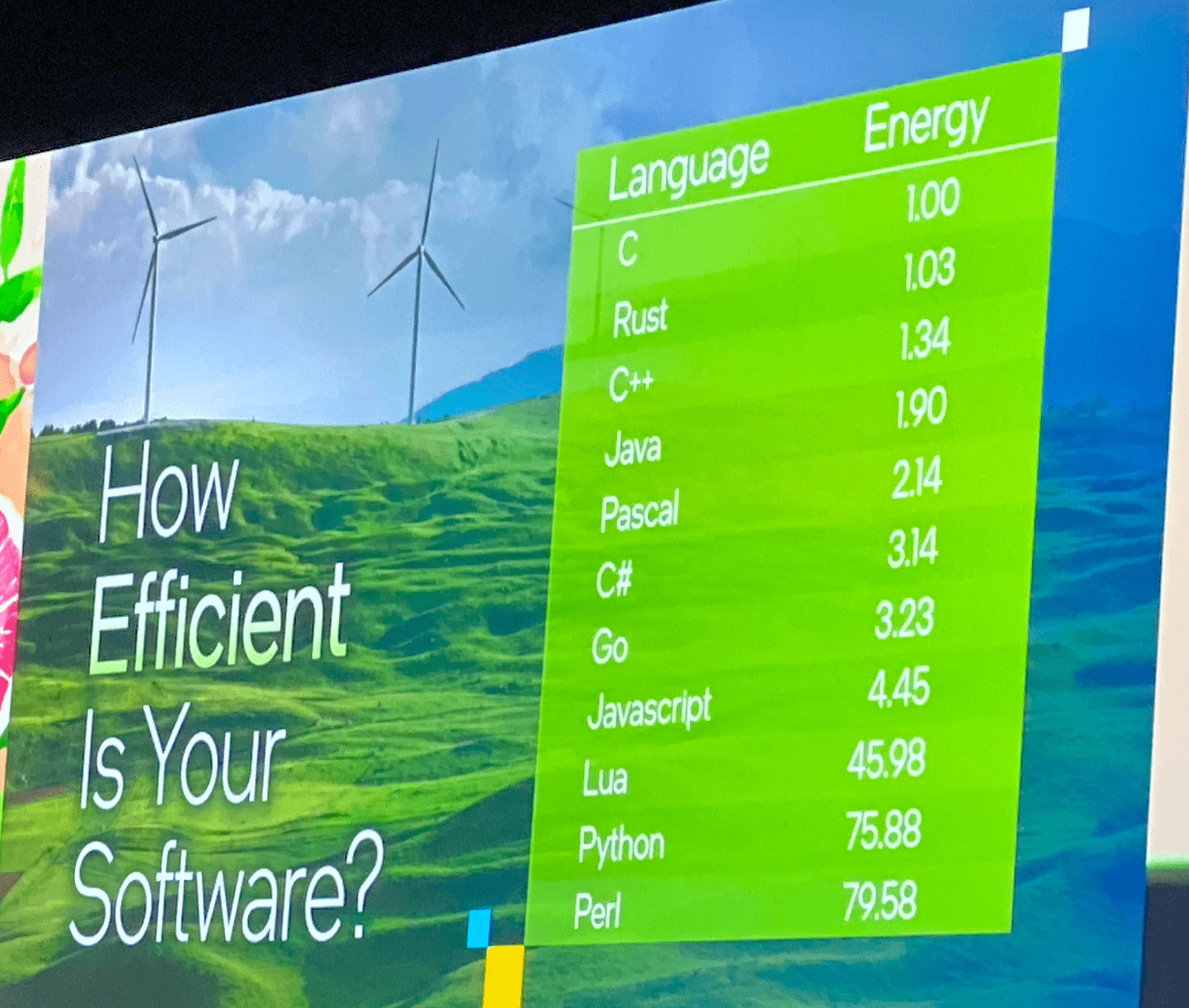
CICD / GitOps
GitOps automates infrastructure updates using a Git workflow with continuous integration (CI) and continuous delivery (CI/CD). When new code is merged, the CI/CD pipeline enacts the change in the environment.
Flux is a great example of this. Flux provides GitOps for both apps and infrastructure. It supports GitRepository, HelmRepository, HelmRepository and Bucket CRD as the single source of truth.
With A/B or Canary deployments, it makes it easy to deploy new features without impacting all the users. When the deployment fails, it can easily roll back.
Checkout the KubeCon schedule page for more information!
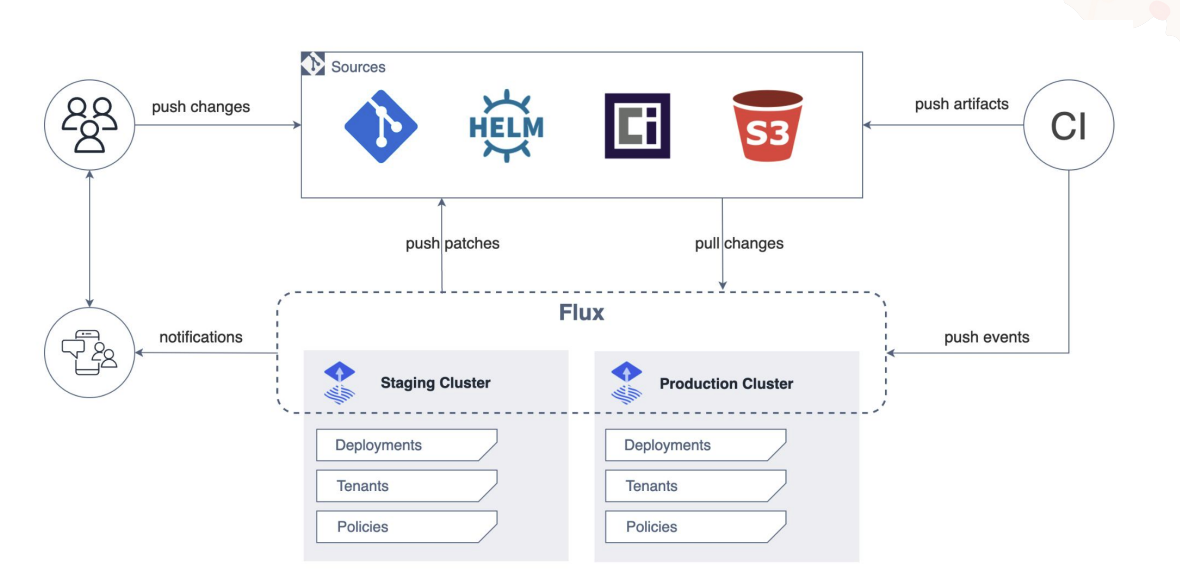
Kubernetes
Even though Kubernetes 1.24 was released a few weeks before the start of the event, not many talks were focused on the Kubernetes core. Most talks were focused on extending Kubernetes (using APIs, controllers, operators, …) or best practices around security, CI/CD, monitoring … for whatever will run within the Kubernetes cluster. If you're interested in the new features that Kubernetes 1.24 has to offer, you can check the official website.
Observability
Getting insights on how your application is running in your cluster is crucial, but not always practical. This is where eBPF comes into play, which is used by tools such as Pixie to collect data without any code changes.
Check out the KubeCon schedule page for more information!
FinOps
Now that more and more people are using Kubernetes, a lot of workloads have been migrated. All these containers have a footprint. Memory, CPU, storage, … needs to be allocated, and they all have a cost. Cost management was a recurring topic during the talks. Using autoscaling (adding but also removing capacity) to match the required resources and identifying unused resources are part of this new movement. New services like 'kubecost' are becoming increasingly popular.
Performance
One of the most common problems in a cluster is not having enough space or resources. With the help of a Vertical Pod Autoscaler (VPA) this can be a thing of the past. A VPA will analyze and store Memory and CPU metrics/data to automatically adjust to the right CPU and memory request limits. The benefits of this approach will let you save money, avoid waste, size optimally the underlying hardware, tune resources on worker nodes and optimize placements of pods in a Kubernetes cluster.
Check out the KubeCon schedule page for more information!
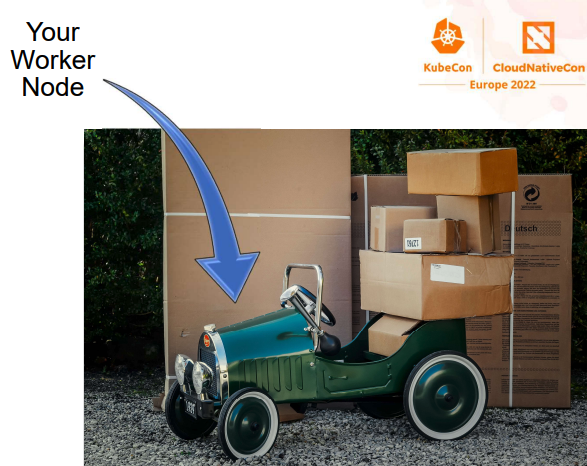
Service mesh
We all know it's extremely important to know which application is sharing data with other applications in your cluster. Service mesh provides traffic control inside your cluster(s). You can block or permit any request that is sent or received from any application to other applications. It also provides Metrics, Specs, Split, ... information to understand the data flow.
In the talk, Service Mesh at Scale: How Xbox Cloud Gaming Secures 22k Pods with Linkerd, Chris explains why they choose Linkerd and what the benefits are of a service mesh.
Check out the KubeCon schedule page for more information!
Security
Trampoline pods, sounds fun, right? During a talk by two security researchers from Palo Alto Networks, we learned that they aren’t all that fun. In short, these are pods that can be used to gain cluster admin privileges. To learn more about the concept and how to deal with them, we strongly recommend taking a look at the slides on the KubeCon schedule page!
Lachlan Evenson from Microsoft gave a clear explanation of Pod Security in his The Hitchhiker's Guide to Pod Security talk.
Pod Security is a built-in admission controller that evaluates Pod specifications against a predefined set of Pod Security Standards and determines whether to admit or deny the pod from running.
— Lachlan Evenson , Principal Program Manager at Microsoft
Pod Security is replacing PodSecurityPolicy starting from Kubernetes 1.23. So if you are using PodSecurityPolicy, now might be a good time to further research Pod Security and the migration path. In version 1.25, support for PodSecurityPolicy will be removed.
If you aren’t using PodSecurityPolicy or Pod Security, it is definitely time to further investigate it!
Another one of the recurring themes of this KubeCon 2022 were operators. Operators enable the extension of the Kubernetes API with operational knowledge. This is achieved by combining Kubernetes controllers and watched objects that describe the desired state. They introduce Custom Resource Definitions, custom controllers, Kubernetes or cloud resources and logging and metrics, making life easier for Dev as well as Ops.
However, during a talk by Kevin Ward from ControlPlane, we learned that there are some risks. Additionally, and more importantly, he also talked about how we can identify those risks with tools such as BadRobot and an operator thread matrix. Checkout the KubeCon schedule page for more information!
Scheduling
Telemetry Aware Scheduling helps you schedule your workloads based on metrics from your worker nodes. You can for example set a rule to not schedule new workloads on worker nodes with more than 90% used memory. The cluster will take this into account when scheduling a pod. Another nice feature of this tool is that it can also reschedule pods to make sure your rules are kept in line.
Checkout the KubeCon schedule page for more information!
Cluster autoscaling
A great way for stateless workloads to scale cost effectively is to use AWS EC2 Spot, which is spare VM capacity available at a discount. To use Spot instances effectively in a K8S cluster, you should use aws-node-termination-handler. This way, you can move your workloads off of a worker node when Spot decides to reclaim it. Another good tool is Karpenter, a tool to provision Spot instances just in time for your cluster. With these two tools, you can cost effectively host your stateless workloads!
Check out the KubeCon schedule page for more information!
Event-driven autoscaling
Using the Horizontal Pod Autoscaler (HPA) is a great way to scale pods based on metrics such as CPU utilization, memory usage, and more.
Instead of scaling based on metrics, Kubernetes Event Driven Autoscaling (KEDA) can scale based on events (Apache Kafka, RabbitMQ, AWS SQS, …) and it can even scale to 0 unlike HPA.
Check out the KubeCon schedule page for more information!
Wrap-up
We had a blast this year at the conference. We left with an inspired feeling that we'll no doubt translate into internal projects, apply for new customer projects and discuss with existing customers where applicable. Not only that, but we'll brief our colleagues and organize an afterglow session for those interested back home in Belgium.
If you appreciated our blog article, feel free to drop us a small message. We are always happy when the content that we publish is also of any value or interest to you. If you think we can help you or your company in adopting Cloud Native, drop me a note at peter.jans@aca-it.be.

As a final note we'd like to thank Mona for the logistics, Stijn and Ronny for this opportunity and the rest of the team who stayed behind to keep an eye on the systems of our valued customers.
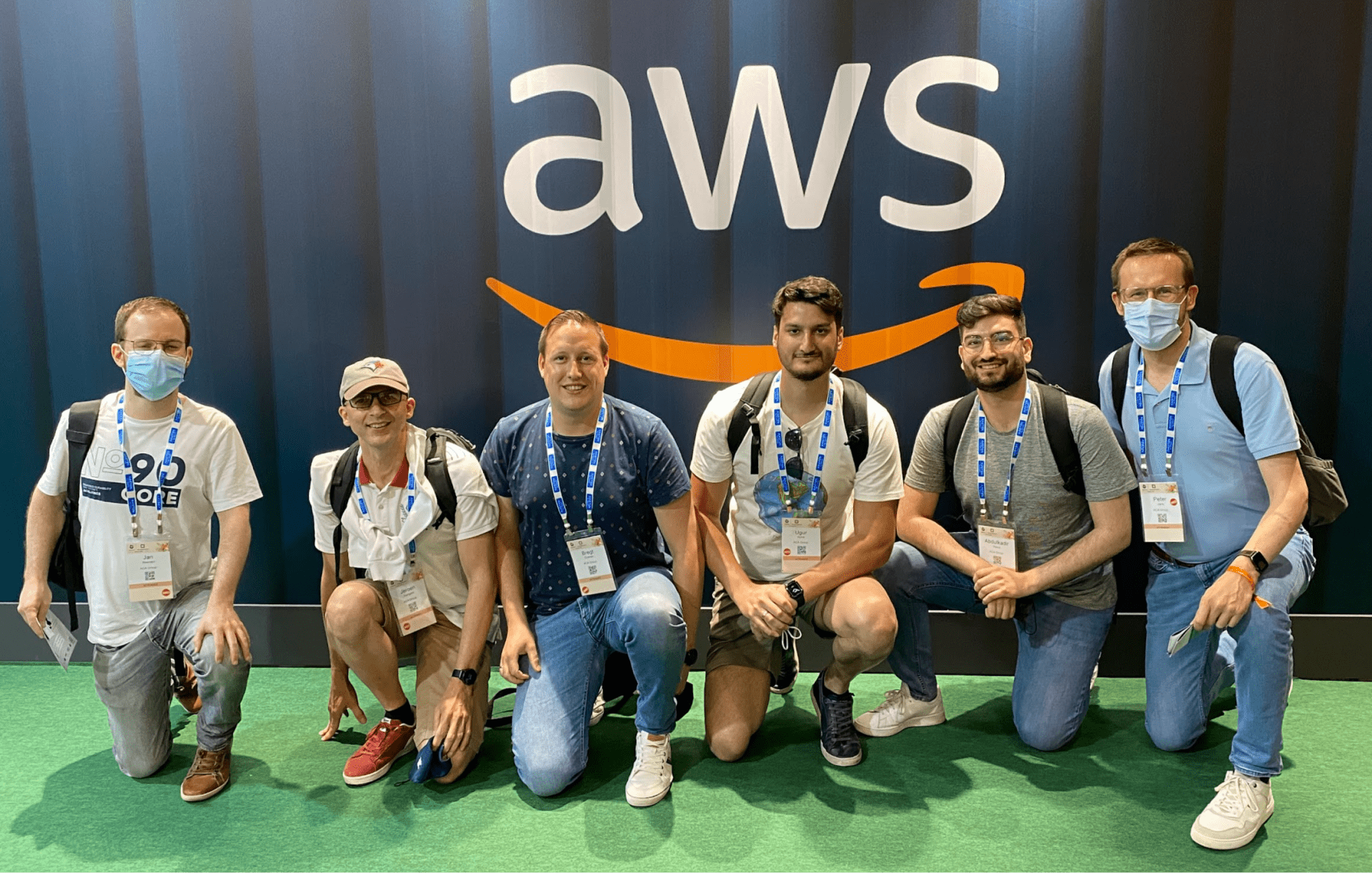
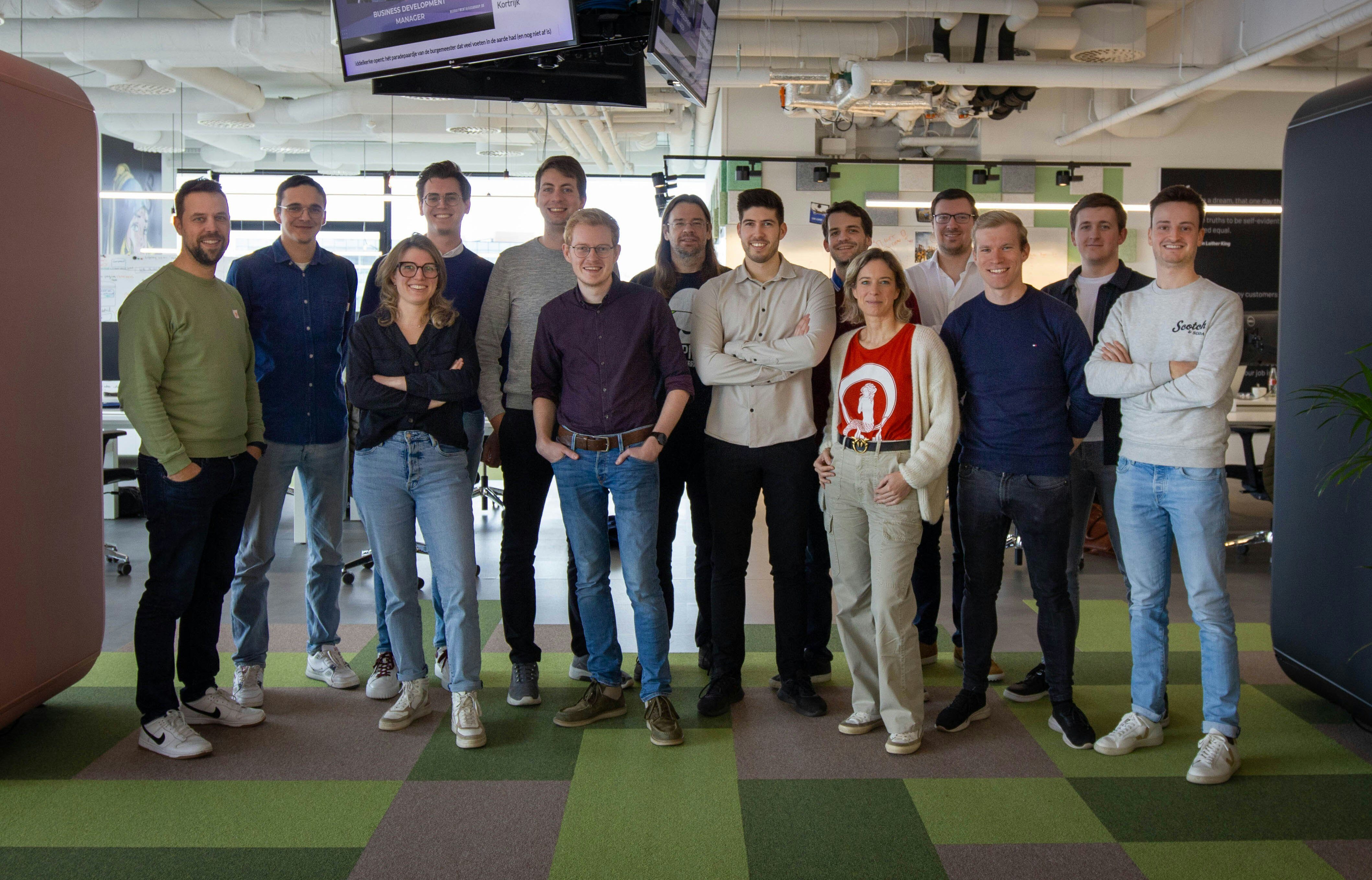

What others have also read


In the complex world of modern software development, companies are faced with the challenge of seamlessly integrating diverse applications developed and managed by different teams. An invaluable asset in overcoming this challenge is the Service Mesh. In this blog article, we delve into Istio Service Mesh and explore why investing in a Service Mesh like Istio is a smart move." What is Service Mesh? A service mesh is a software layer responsible for all communication between applications, referred to as services in this context. It introduces new functionalities to manage the interaction between services, such as monitoring, logging, tracing, and traffic control. A service mesh operates independently of the code of each individual service, enabling it to operate across network boundaries and collaborate with various management systems. Thanks to a service mesh, developers can focus on building application features without worrying about the complexity of the underlying communication infrastructure. Istio Service Mesh in Practice Consider managing a large cluster that runs multiple applications developed and maintained by different teams, each with diverse dependencies like ElasticSearch or Kafka. Over time, this results in a complex ecosystem of applications and containers, overseen by various teams. The environment becomes so intricate that administrators find it increasingly difficult to maintain a clear overview. This leads to a series of pertinent questions: What is the architecture like? Which applications interact with each other? How is the traffic managed? Moreover, there are specific challenges that must be addressed for each individual application: Handling login processes Implementing robust security measures Managing network traffic directed towards the application ... A Service Mesh, such as Istio, offers a solution to these challenges. Istio acts as a proxy between the various applications (services) in the cluster, with each request passing through a component of Istio. How Does Istio Service Mesh Work? Istio introduces a sidecar proxy for each service in the microservices ecosystem. This sidecar proxy manages all incoming and outgoing traffic for the service. Additionally, Istio adds components that handle the incoming and outgoing traffic of the cluster. Istio's control plane enables you to define policies for traffic management, security, and monitoring, which are then applied to the added components. For a deeper understanding of Istio Service Mesh functionality, our blog article, "Installing Istio Service Mesh: A Comprehensive Step-by-Step Guide" , provides a detailed, step-by-step explanation of the installation and utilization of Istio. Why Istio Service Mesh? Traffic Management: Istio enables detailed traffic management, allowing developers to easily route, distribute, and control traffic between different versions of their services. Security: Istio provides a robust security layer with features such as traffic encryption using its own certificates, Role-Based Access Control (RBAC), and capabilities for implementing authentication and authorization policies. Observability: Through built-in instrumentation, Istio offers deep observability with tools for monitoring, logging, and distributed tracing. This allows IT teams to analyze the performance of services and quickly detect issues. Simplified Communication: Istio removes the complexity of service communication from application developers, allowing them to focus on building application features. Is Istio Suitable for Your Setup? While the benefits are clear, it is essential to consider whether the additional complexity of Istio aligns with your specific setup. Firstly, a sidecar container is required for each deployed service, potentially leading to undesired memory and CPU overhead. Additionally, your team may lack the specialized knowledge required for Istio. If you are considering the adoption of Istio Service Mesh, seek guidance from specialists with expertise. Feel free to ask our experts for assistance. More Information about Istio Istio Service Mesh is a technological game-changer for IT professionals aiming for advanced control, security, and observability in their microservices architecture. Istio simplifies and secures communication between services, allowing IT teams to focus on building reliable and scalable applications. Need quick answers to all your questions about Istio Service Mesh? Contact our experts
Read more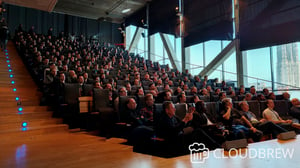

On December 7 and 8, 2023, several ACA members participated in CloudBrew 2023 , an inspiring two-day conference about Microsoft Azure. In the scenery of the former Lamot brewery, visitors had the opportunity to delve into the latest cloud developments and expand their network. With various tracks and fascinating speakers, CloudBrew offered a wealth of information. The intimate setting allowed participants to make direct contact with both local and international experts. In this article we would like to highlight some of the most inspiring talks from this two-day cloud gathering: Azure Architecture: Choosing wisely Rik Hepworth , Chief Consulting Officer at Black Marble and Microsoft Azure MVP/RD, used a customer example in which .NET developers were responsible for managing the Azure infrastructure. He engaged the audience in an interactive discussion to choose the best technologies. He further emphasized the importance of a balanced approach, combining new knowledge with existing solutions for effective management and development of the architecture. From closed platform to Landing Zone with Azure Policy David de Hoop , Special Agent at Team Rockstars IT, talked about the Azure Enterprise Scale Architecture, a template provided by Microsoft that supports companies in setting up a scalable, secure and manageable cloud infrastructure. The template provides guidance for designing a cloud infrastructure that is customizable to a business's needs. A critical aspect of this architecture is the landing zone, an environment that adheres to design principles and supports all application portfolios. It uses subscriptions to isolate and scale application and platform resources. Azure Policy provides a set of guidelines to open up Azure infrastructure to an enterprise without sacrificing security or management. This gives engineers more freedom in their Azure environment, while security features are automatically enforced at the tenant level and even application-specific settings. This provides a balanced approach to ensure both flexibility and security, without the need for separate tools or technologies. Belgium's biggest Azure mistakes I want you to learn from! During this session, Toon Vanhoutte , Azure Solution Architect and Microsoft Azure MVP, presented the most common errors and human mistakes, based on the experiences of more than 100 Azure engineers. Using valuable practical examples, he not only illustrated the errors themselves, but also offered clear solutions and preventive measures to avoid similar incidents in the future. His valuable insights helped both novice and experienced Azure engineers sharpen their knowledge and optimize their implementations. Protecting critical ICS SCADA infrastructure with Microsoft Defender This presentation by Microsoft MVP/RD, Maarten Goet , focused on the use of Microsoft Defender for ICS SCADA infrastructure in the energy sector. The speaker shared insights on the importance of cybersecurity in this critical sector, and illustrated this with a demo demonstrating the vulnerabilities of such systems. He emphasized the need for proactive security measures and highlighted Microsoft Defender as a powerful tool for protecting ICS SCADA systems. Using Azure Digital Twin in Manufacturing Steven De Lausnay , Specialist Lead Data Architecture and IoT Architect, introduced Azure Digital Twin as an advanced technology to create digital replicas of physical environments. By providing insight into the process behind Azure Digital Twin, he showed how organizations in production environments can leverage this technology. He emphasized the value of Azure Digital Twin for modeling, monitoring and optimizing complex systems. This technology can play a crucial role in improving operational efficiency and making data-driven decisions in various industrial applications. Turning Azure Platform recommendations into gold Magnus Mårtensson , CEO of Loftysoft and Microsoft Azure MVP/RD, had the honor of closing CloudBrew 2023 with a compelling summary of the highlights. With his entertaining presentation he offered valuable reflection on the various themes discussed during the event. It was a perfect ending to an extremely successful conference and gave every participant the desire to immediately put the insights gained into practice. We are already looking forward to CloudBrew 2024! 🚀
Read more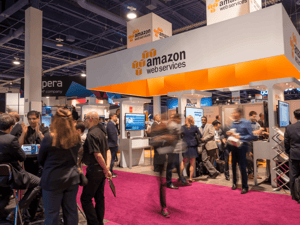
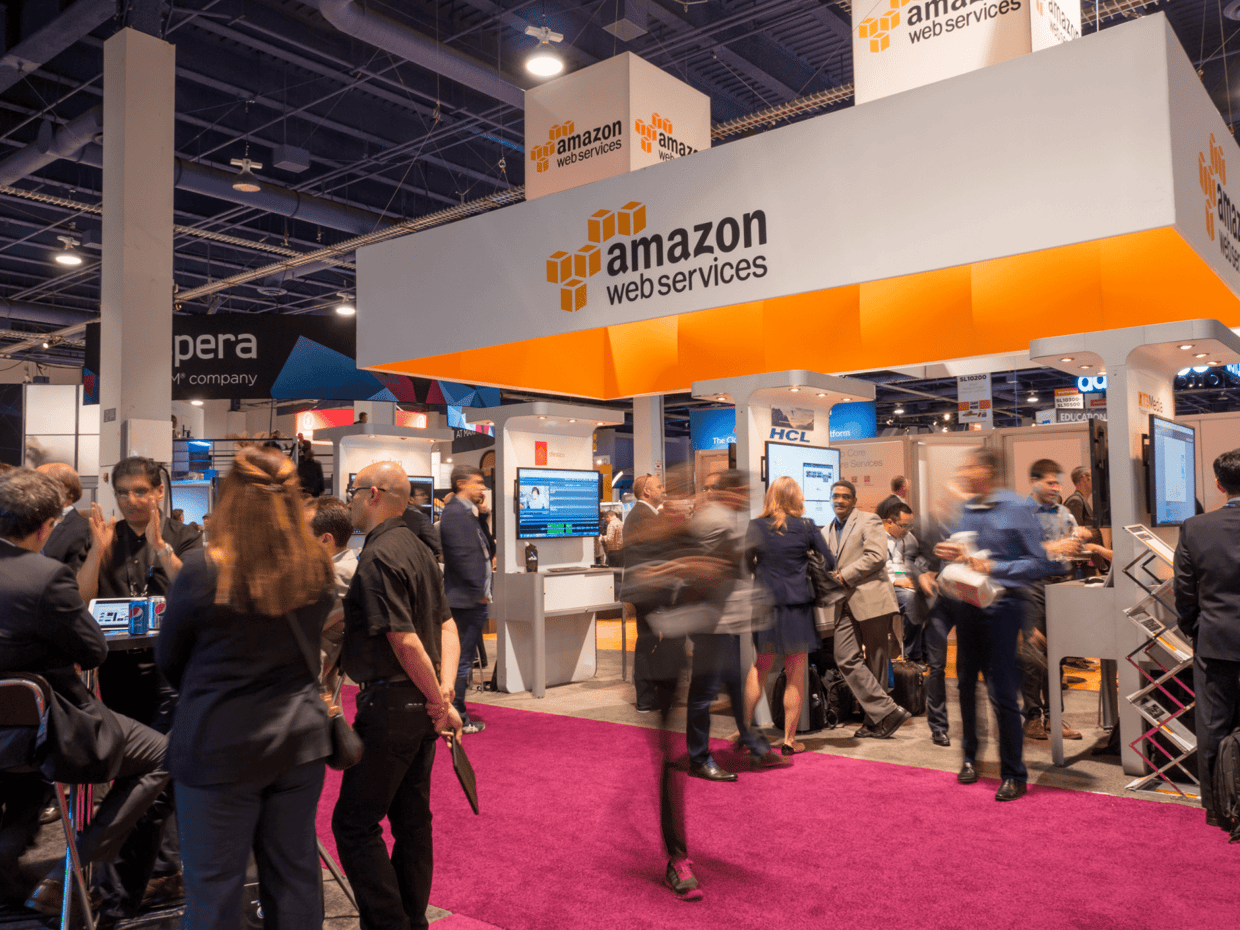
Like every year, Amazon held its AWS re:Invent 2021 in Las Vegas. While we weren’t able to attend in person due to the pandemic, as an AWS Partner we were eager to follow the digital event. Below is a quick rundown of our highlights of the event to give you a summary in case you missed it! AWS closer to home AWS will build 30 new ‘ Local Zones ’ in 2022, including one in our home base: Belgium. AWS Local Zones are a type of infrastructure deployment that places compute, storage, database, and other select AWS services close to large population and industry centers. The Belgian Local Zone should be operational by 2023. Additionally, the possibilities of AWS Outposts have increased . The most important change is that you can now run far more services on your own server delivered by AWS. Quick recap: AWS Outposts is a family of fully managed solutions delivering AWS infrastructure and services to virtually any on-premises or edge location for a consistent hybrid experience. Outposts was previously only available in a 42U Outposts rack configuration. From now on, AWS offers a variety of form factors, including 1U and 2U Outposts servers for when there’s less space available. We’re very tempted to get one for the office… AWS EKS Anywhere was previously announced, but is now a reality! With this service, it’s possible to set up a Kubernetes cluster on your own infrastructure or infrastructure from your favorite cloud provider, while still managing it through AWS EKS. All the benefits of freedom of choice combined with the unified overview and dashboard of AWS EKS. Who said you can’t have your cake and eat it too? Low-code to regain primary focus With Amplify Studio , AWS takes the next step in low-code development. Amplify Studio is a fully-fledged low-code generator platform that builds upon the existing Amplify framework. The platform allows users to build applications through drag and drop with the possibility of adding custom code wherever necessary. Definitely something we’ll be looking at on our next Ship-IT Day! Machine Learning going strong(er) Ever wanted to start with machine learning, but not quite ready to invest some of your hard-earned money? With SageMaker Studio Lab , AWS announced a free platform that lets users start exploring AI/ML tools without having to register for an AWS account or leave credit card details behind. You can try it yourself for free in your browser through Jupyter notebooks ! Additionally, AWS announced SageMaker Canvas : a visual, no-code machine learning capability for business analysts. This allows them to get started with ML without having extensive experience and get more insights in data. The third chapter in the SageMaker saga consists of SageMaker Ground Truth Plus . With this new service, you hire a team of experts to train and label your data, a traditionally very labor intensive process. According to Amazon, customers can expect to save up to 40% through SageMaker Ground Truth Plus. There were two more minor announcements: the AI ML Scholarschip Program , a free program for students to get to know ML tools, and Lex Automated Chatbot Designer , which lets you quickly develop a smart chatbot with advanced natural language processing support. Networking for everyone Tired of less than optimal reception or a slow connection? Why not build your own private 5G network? Yep: with AWS Private 5G , Amazon delivers the hardware, management and sim cards for you to set up your very own 5G network. Use cases (besides being fed up with your current cellular network) include warehouses or large sites (e.g. a football stadium) that require low latency, excellent coverage and a large bandwidth. The best part? Customers only pay for the end user’s usage of the network. Continuing the network theme, there’s now AWS Cloud WAN . This service allows users to build a managed WAN (Wide Area Network) to connect cloud and on-premise environments with a central management UI on a network components level as well as service level. Lastly, there’s also AWS Workspaces Web . Through this service, customers can grant employees safe access to internal website and SaaS applications. The big advantage here is that information critical to the company never leaves the environment and doesn’t leave any traces on workstations, thanks to a non-persistent web browser. Kubernetes anyone? No AWS event goes without mentioning Kubernetes, and AWS re:Invent 2021 is no different. Amazon announced two new services in the Kubernetes space: AWS Karpenter and AWS Marketplace for Containers Anywhere . With AWS Karpenter, managing autoscaling Kubernetes infrastructure becomes both simpler and less restrictive. It takes care of automatically starting compute when the load of an application changes. Interestingly, Karpenter is fully open-source, a trend which we’ll see more and more according to Amazon. AwS Marketplace for Containers Anywhere is primarily useful for customers who’ve already fully committed to container managed platforms. It allows users to search, subscribe and deploy 3rd party Kubernetes apps from the AWS Marketplace in any Kubernetes cluster, no matter the environment. IoT updates There have been numerous smaller updates to AWS’s IoT services, most notably to: GreenGrass SSM , which now allows you to securely manage your devices using AWS Systems Manager Amazon Monitron to predict when maintenance is required for rotating parts in machines AWS IoT TwinMaker , to simply make Digital Twins of real-world systems AWS IoT FleetWise , whichs helps users to collect vehicle data in the cloud in near-real time. Upping the serverless game In the serverless landscape, AWS announced serverless Redshift , EMR , MSK , and Kinesis . This enables to set up services while the right instance type is automatically linked. If the service is not in use, the instance automatically stops. This way, customers only pay for when a service is actually being used. This is particularly interesting for experimental services and integrations in environments which do not get used very often. Sustainability Just like ACA Group’s commitment to sustainability , AWS is serious about their ambition towards net-zero carbon by 2040. They’ve developed the AWS Customer Carbon Footprint tool, which lets users calculate carbon emissions through their website . Other announcements included AWS Mainframe Modernization , a collection of tools and guides to take over existing mainframes with AWS, and AWS Well-Architected Framework , a set of design principles, guidelines, best practices and improvements to validate sustainability goals and create reports. We can't wait to start experimenting with all the new additions and improvements announced at AWS re:Invent 2021. Thanks for reading! Discover our cloud hosting services
Read moreWant to dive deeper into this topic?
Get in touch with our experts today. They are happy to help!

Want to dive deeper into this topic?
Get in touch with our experts today. They are happy to help!

Want to dive deeper into this topic?
Get in touch with our experts today. They are happy to help!

Want to dive deeper into this topic?
Get in touch with our experts today. They are happy to help!

